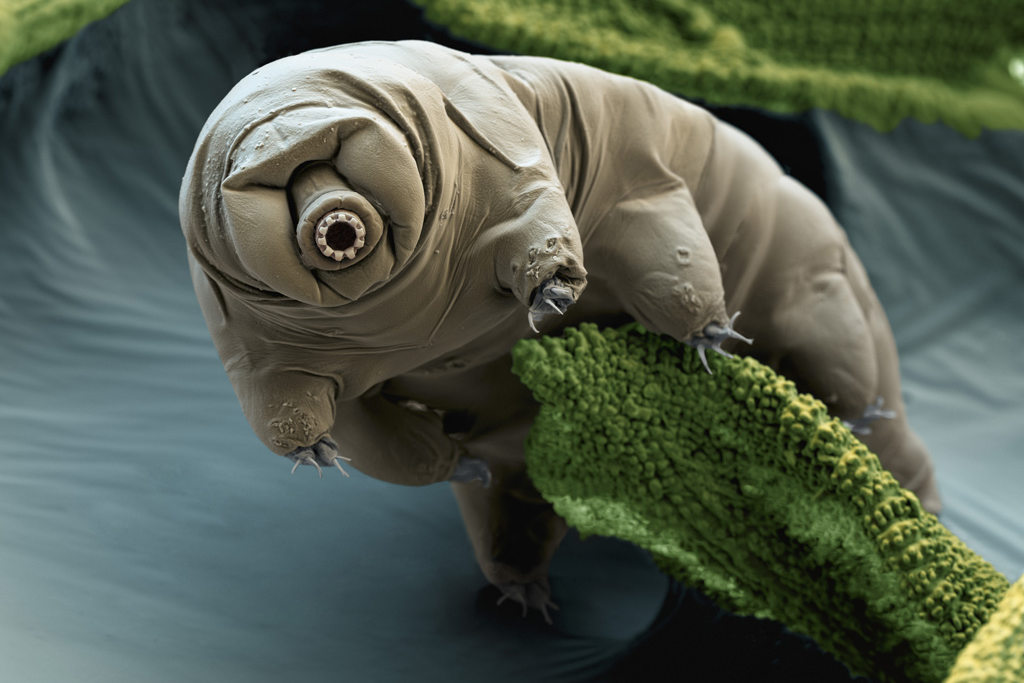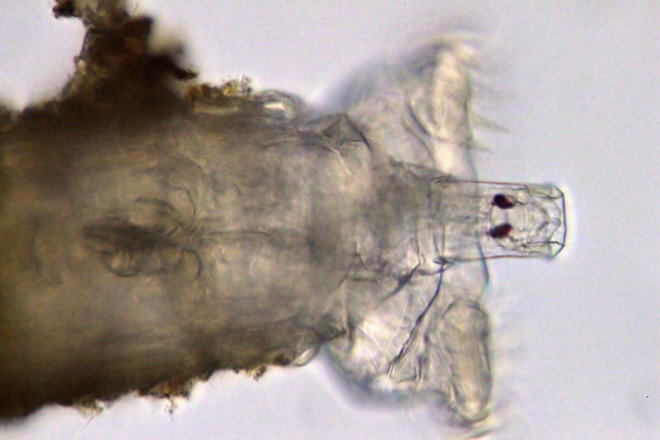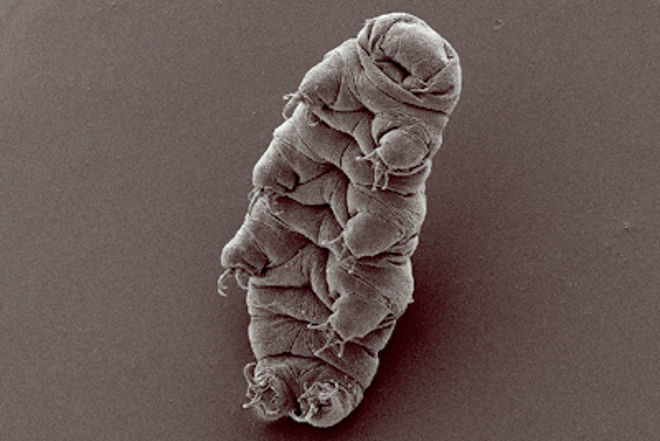Scientists Discover Something Interesting About Tardigrades; Give Us Reason To Talk About Tardigrades
The tardigrade is suddenly newsworthy. Here are some images of it.

Tardigrades are water-dwelling “micro-animals” that grow up to .5mm long, and are known as one of the most durable organisms on earth. Able to withstand temperatures ranging from -273°C to 150°C, and a thousand times more radiation than humans, they can live dehydrated for 120+ years and survive in the vacuum of space. They are fascinating, and I hate them.
Although they are visually disgusting and apparently indestructible, they are colloquially referred to as “water bears” and “moss piglets” — buoyantly misleading epithets for heartless, stump-clawed sea monsters that ultimately look like this:

Haiiiiii. (via Relaxic.net)
The reason I just made you look at that revolting porcine mess is because it is suddenly newsworthy: today, researchers from the University of North Carolina published a report in The Proceedings of the National Academy of Scientists, wherein they presented the sequenced genome of the tardigrade and found 17.5% of it to be comprised of foreign DNA.
“We had no idea that an animal genome could be composed of so much foreign DNA,” said Bob Goldstein, a member of faculty at UNC who co-authored the report. “We knew many animals acquire foreign genes, but we had no idea that it happens to this degree.”
Until today, the record-holder has been the rotifera: a microscopic water-dweller who has half the amount of foreign DNA as a tardigrade, and looks exactly like you.

You look so great in this photo. (Via Wikimedia.)
The researchers believe that the foreign DNA — which comes primarily from bacteria, plants, fungi and single-celled micro-organisms — are picked up via a process called ‘horizontal gene transfer’: the swapping of genetic material between species, as opposed to traditional reproduction. They proposed that when living under extreme stress — common for an animal that can withstand so much of it — the DNA breaks apart; when the cell reconfigures, its membrane and nucleus are “leaky”, allowing other DNA to pass through it.
This entire article is just a vehicle for images of this horrifying aberration, so here is another:

(via Cosmos: A Space Time Odyssey/National Geographic)
The implication of the new report is fairly significant. “With horizontal gene transfer becoming more widely accepted and more well known, at least in certain organisms, it is beginning to change the way we think about evolution and inheritance of genetic material and the stability of genomes,” the report’s lead author Thomas Boothby says. “So instead of thinking of the tree of life, we can think about the web of life and genetic material crossing from branch to branch.
“We are beginning to adjust our understanding of how evolution works.”

LOVE ME! (SEM by Bob Goldstein and Vicky Madden)
In September 2007, the European Space Agency did what any with the necessary resources would: they dried-up that god-forsaken nightmare, and shot it directly into space.
After ten days of space vacuum exposure, and in what must have been an egregious blunder, someone paid actual money to return the tardigrades to earth to be rehydrated. Most were revived within 30 minutes, and many went on to lay eggs that successfully hatched.
So, that’s something to think about. And here’s something to look at:
Oh look, here’s another.
And one more.

(Screenshot via Cosmos: A Space Time Odyssey)
You’re welcome.
–
Feature image is a color enhanced SEM by Nicole Ottawa & Oliver Meckes / Eye of Science / Science Source Images
